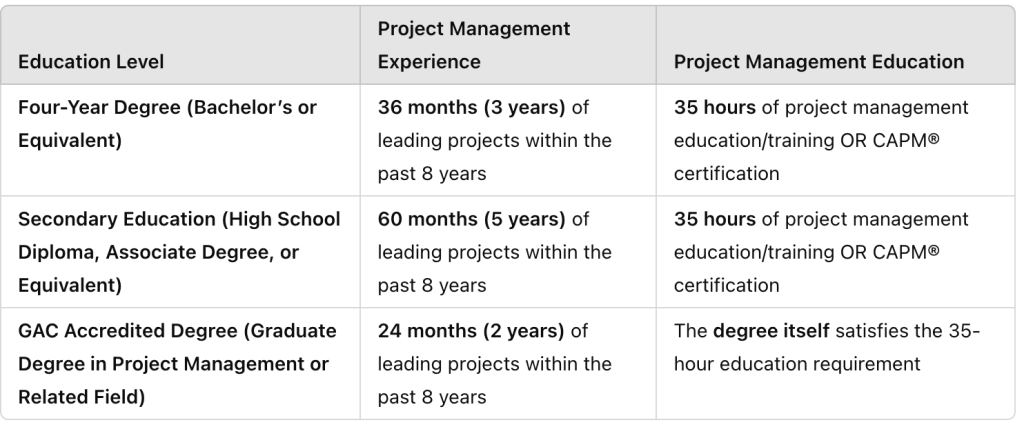1. A fundamental requirement to succeed with Cheetah’s PMP approach is the ability to FOLLOW THE PROGRAM.
An indicator of a prospective student’s ability to follow the program is with heading basic instructions. This requires reading emails in a timely manner and taking actions consistent with the directions provided. People who ask the same question repeatedly (likely already addressed in the FAQ) yet never respond to any emails answering these questions, and make no efforts to remediate this behavior, will not be allowed to register for the course as it shows an inability to follow basic instructions We’ve learned over the past 25 years, this type of person is rarely successful with our approach and significantly impacts the performance of the other students.
2. Be willing to take the actual PMP course the day after your Cheetah course ends
AFTER YOU REGISTER, to get ready for your Cheetah PMP course, you do a pre-course or Sprint 1. As part of your readiness, you are directed how to most effectively complete the PMI PMP eligibility application. You must schedule your actual PMP exam the day after your Cheetah course ends in order to take the second part of your Cheetah course (the second part gets you ready to pass the PMP exam). To take the PMP exam, you must submit a qualified PMP eligibility application to PMI – see the information below. Cheetah’s Pre-Course and Sprint 1 meet the required 35 hours of PM education

PMI defines “leading and directing” projects as being actively responsible for managing and overseeing various aspects of project execution. It does not require a formal job title of “Project Manager” but requires candidates to demonstrate that they have taken responsibility for key project tasks.
Key Aspects of Leading a Project According to PMI:
- Initiating – Defining the project, setting goals, securing approvals, and identifying key stakeholders.
- Planning – Developing a project plan, setting timelines, estimating budgets, and identifying risks.
- Executing – Coordinating team efforts, managing communications, and ensuring work is progressing as planned.
- Monitoring & Controlling – Tracking project performance, managing changes, and addressing issues.
- Closing – Finalizing deliverables, getting stakeholder acceptance, and completing project documentation.
What PMI Looks for in Your Experience Submission:
- You must have led tasks, teams, or project phases, even if you weren’t the official “Project Manager.”
- Your role should have involved decision-making authority, guiding project work, and ensuring successful delivery.
- The experience must be non-overlapping (e.g., two projects done at the same time only count for the actual months worked, not double).
Examples of Acceptable “Leading and Directing” Experience:
You were responsible for a key project component (e.g., scheduling, budgeting, or risk management).
You coordinated efforts among different stakeholders.
You managed project risks, scope changes, or resources.
You ensured deliverables met stakeholder requirements.
You facilitated project meetings, managed communication, and tracked progress.
